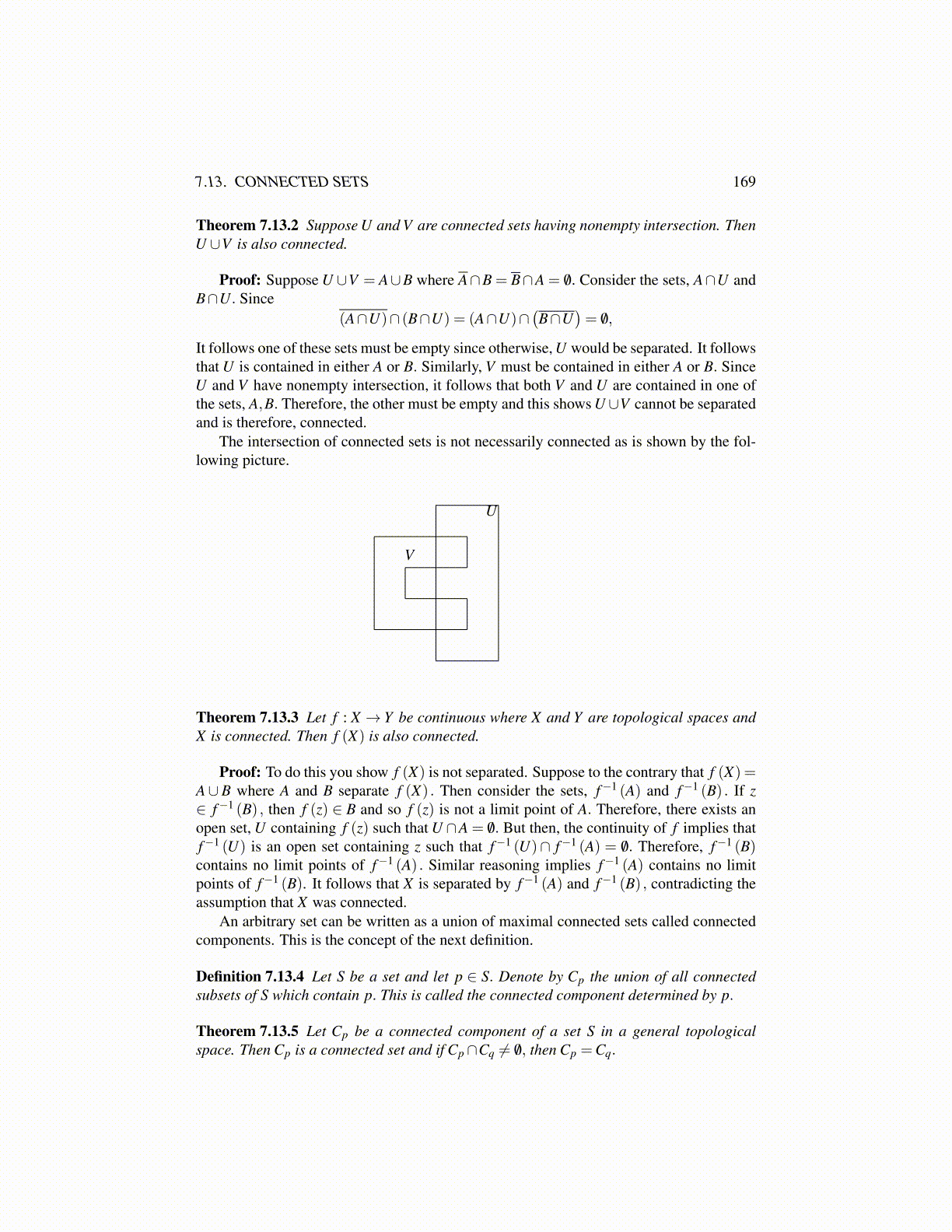
7.13. CONNECTED SETS 169
Theorem 7.13.2 Suppose U and V are connected sets having nonempty intersection. ThenU ∪V is also connected.
Proof: Suppose U ∪V = A∪B where A∩B = B∩A = /0. Consider the sets, A∩U andB∩U. Since
(A∩U)∩ (B∩U) = (A∩U)∩(B∩U
)= /0,
It follows one of these sets must be empty since otherwise, U would be separated. It followsthat U is contained in either A or B. Similarly, V must be contained in either A or B. SinceU and V have nonempty intersection, it follows that both V and U are contained in one ofthe sets, A,B. Therefore, the other must be empty and this shows U ∪V cannot be separatedand is therefore, connected.
The intersection of connected sets is not necessarily connected as is shown by the fol-lowing picture.
U
V
Theorem 7.13.3 Let f : X → Y be continuous where X and Y are topological spaces andX is connected. Then f (X) is also connected.
Proof: To do this you show f (X) is not separated. Suppose to the contrary that f (X) =A∪B where A and B separate f (X) . Then consider the sets, f−1 (A) and f−1 (B) . If z∈ f−1 (B) , then f (z) ∈ B and so f (z) is not a limit point of A. Therefore, there exists anopen set, U containing f (z) such that U ∩A = /0. But then, the continuity of f implies thatf−1 (U) is an open set containing z such that f−1 (U)∩ f−1 (A) = /0. Therefore, f−1 (B)contains no limit points of f−1 (A) . Similar reasoning implies f−1 (A) contains no limitpoints of f−1 (B). It follows that X is separated by f−1 (A) and f−1 (B) , contradicting theassumption that X was connected.
An arbitrary set can be written as a union of maximal connected sets called connectedcomponents. This is the concept of the next definition.
Definition 7.13.4 Let S be a set and let p ∈ S. Denote by Cp the union of all connectedsubsets of S which contain p. This is called the connected component determined by p.
Theorem 7.13.5 Let Cp be a connected component of a set S in a general topologicalspace. Then Cp is a connected set and if Cp∩Cq ̸= /0, then Cp =Cq.